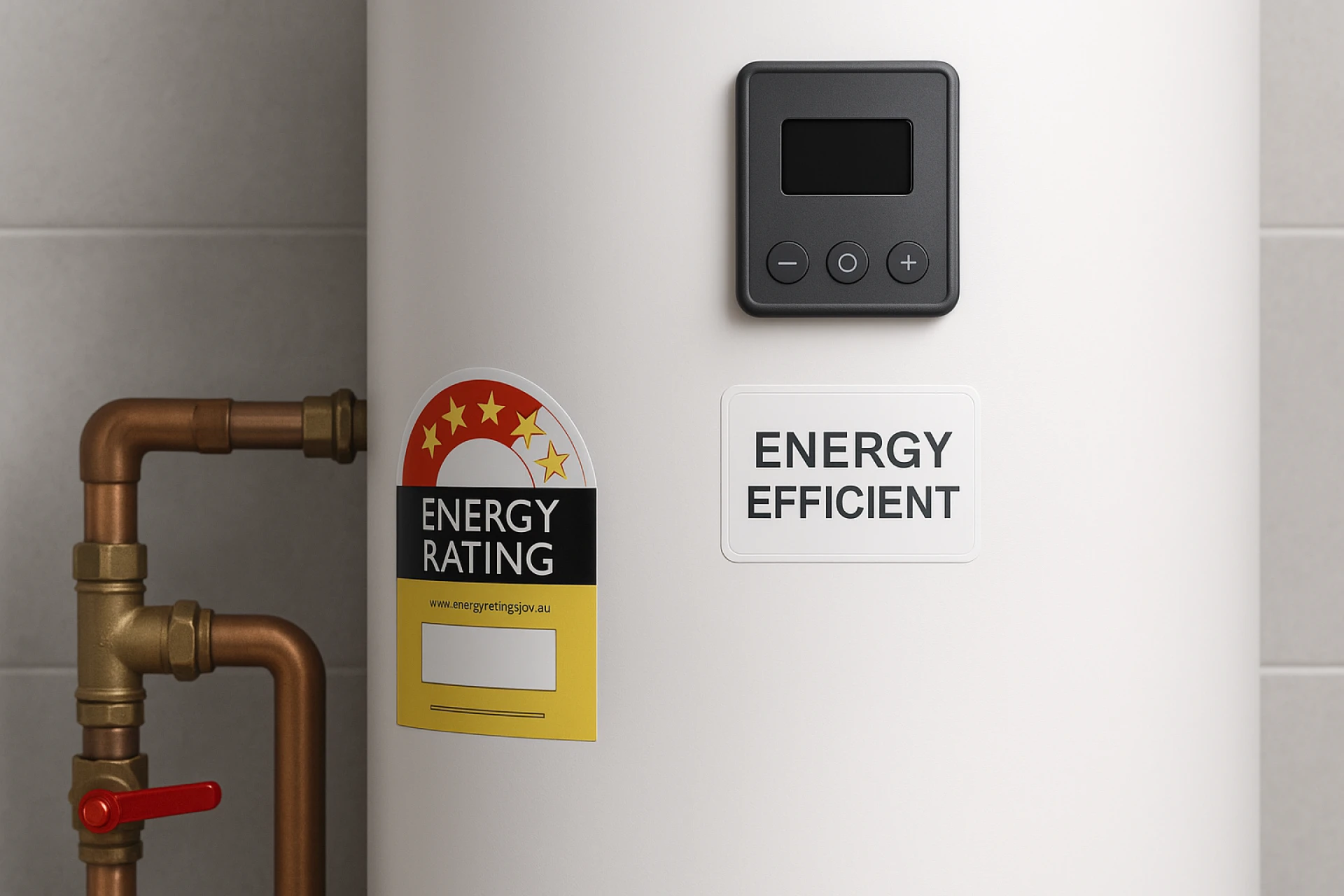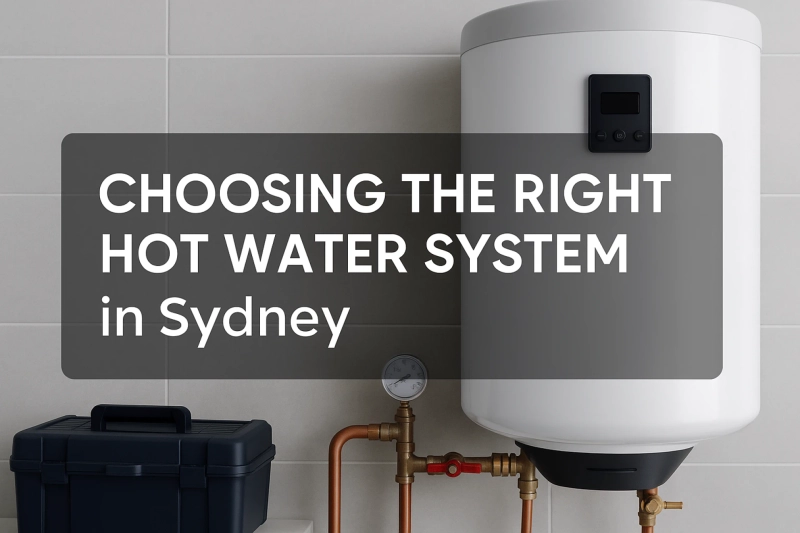In Sydney, where homes range from retro weatherboard cottages to high-density apartments, hot water systems aren’t just plumbing infrastructure — they shape daily comfort. What works in a Mosman mansion might be wildly inefficient in a city-view studio.
That’s why it’s worth pausing before defaulting to whatever’s on the plumber’s van. In many cases, electric hot water systems offer a practical solution thanks to their reliability, installation flexibility, and suitability for existing household layouts. Their compact design makes them especially useful in older buildings or strata-managed properties where space and access are limited.
Still, a "best system" doesn't exist. It's about balance. What system will deliver reliable hot water without overloading your space or infrastructure? That’s what this guide aims to unpack — based on current technology, real usage in Sydney homes, and contextual factors that matter more than glossy product sheets.
Understanding system types and their role in Sydney homes
Sydney’s diverse housing landscape demands a closer look at available system types — and how they operate in different living scenarios. Making an informed choice starts with understanding the types of hot water systems.
Here’s how the four main categories stack up:
Electric storage systems
- Common in apartments and renovations
- Easy to install in confined spaces
- Suited to consistent, moderate demand
- Gas continuous flow systems
- Excellent for larger families or homes with dual bathrooms
- Offer instant hot water, no storage tank needed
- Require connection to the natural gas network
Solar hot water systems
- Rooftop panels preheat water using the sun
- Effective in well-oriented homes with clear solar access
- Pair well with electric or gas boosters
Heat pump systems
- Pull warmth from ambient air to heat water
- High efficiency, especially in temperate coastal zones
- Works best with sufficient airflow and spacing
A friend in Ryde recently shared how their heat pump system had been outperforming expectations — whisper-quiet, low maintenance, and easily adapted to their standalone townhouse. But it wouldn’t have worked in a dense apartment block where vented airflow wasn’t possible. That kind of nuance is what makes system type so important to consider up front.
Why energy-efficient systems matter for Sydney homes
In a city where space, efficiency, and infrastructure vary widely, choosing the right system is as much about long-term adaptability as it is about heating performance. Government resources like those found on energy efficient hot water systems outline the range of technologies now available and why newer systems often outperform legacy setups in real-world conditions.
What stands out is the growing emphasis on integration — systems that work well with solar energy, smart home tech, or modern insulation practices. As more suburbs adopt sustainable planning guidelines, the case for low-impact, high-efficiency systems becomes even clearer.
Key takeaways from the national guidance:
- System type matters more than brand
- Efficiency ratings vary even within similar units
- Long-term performance is affected by installation quality
- Federal guidelines help reduce over-spec or under-spec setups
These aren’t abstract technical points. They guide Sydney homeowners toward systems that meet both present and future needs without overcomplicating the installation process.
Choosing based on lifestyle, not labels
If there's one trap to avoid, it’s basing the decision purely on brand name or installer preference. Sydney’s housing density, older plumbing infrastructure, and varied climates across the basin all contribute to unique installation needs.
Some questions worth weighing include:
- How many consecutive showers happen daily?
- Is your usage predictable or staggered?
- Do you have regular guests or shared tenancy?
- Is your building under strata or heritage control?
These factors may affect not just what you install, but when and how it gets serviced later. For example, renters in a Petersham duplex might lean toward portable or low-profile units that can be relocated. Meanwhile, homeowners in the Northern Beaches may select long-term options that align with their renovation timeline.
Bulletproof decision-making isn't about picking the most advanced unit — it’s about choosing based on how your household actually lives.
Performance under pressure: insights from real Sydney homes
Beyond technical specs, lived experience tells you what brochures don’t. Noise, temperature consistency, and system response time — these factors all shape how “good” a system really is once installed.
Consider this: a family in Eastwood shared on a local forum that their system, highly rated by industry standards, struggled on cold mornings when everyone showered back-to-back. Turns out the recovery rate was too slow for their usage pattern. They replaced it with a continuous flow gas model with far fewer delays.
Across Sydney, stories like this pop up in community reviews and forums focused on hot water system reviews. People want to know how these systems behave after two years, during summer storms, or while renovating a laundry space. That kind of real-world feedback is gold, and far more useful than spec charts alone.
Practical questions to ask your installer
Your installer isn't just a technician — they’re an interpreter. They take all these considerations (usage patterns, rebates, space constraints) and translate them into action. Asking the right questions upfront can avoid costly misalignment or surprises later.
Some examples:
- “What systems are best for my household usage pattern?”
- “Is my switchboard adequate for an electric or heat pump upgrade?”
- “Will this system need additional space or ventilation?”
- “Are there future upgrade paths for solar or smart controls?”
Reliable installers are happy to walk through these questions without overselling. They should feel like collaborators, not salespeople.
The role of local climate and building density
Few cities are as geographically varied as Sydney. Inner west terraces, coastal duplexes, suburban homes and CBD apartments all offer different installation landscapes. That’s why site context matters.
Key environmental and structural factors to consider:
- Solar availability: Rooftop access and orientation determine solar viability
- Space constraints: Tank systems may be impractical in tight apartments
- Noise limitations: Heat pumps and boosters must comply with council noise rules
- Retrofitting challenges: Older buildings may need pipe upgrades or added waterproofing
In a Marrickville renovation I worked on last year, the owners initially selected a tank-based gas system. But once we reviewed the plumbing angles and strata bylaws, it became clear that a slimline electric model was the only feasible choice. It turned out to be a win — the space saved was used for added laundry storage, and the system has run fault-free ever since.

Final thoughts: clarity before commitment
A good hot water system is invisible when it works — and all-consuming when it doesn’t. In Sydney’s complex mix of property styles, planning restrictions, and evolving environmental priorities, choosing the right unit requires more than flipping through a catalogue.
Start with a clear sense of how your home operates day-to-day. What works in a freestanding Penrith house might fail fast in a tight Marrickville flat. From electric hot water systems to heat pumps and hybrid models, choice should come from understanding, not habit.
And whether you’re upgrading an ageing setup or fitting out a new build, always consider the broader framework — the types of hot water systems available to you, and how well they serve your needs today and tomorrow.



